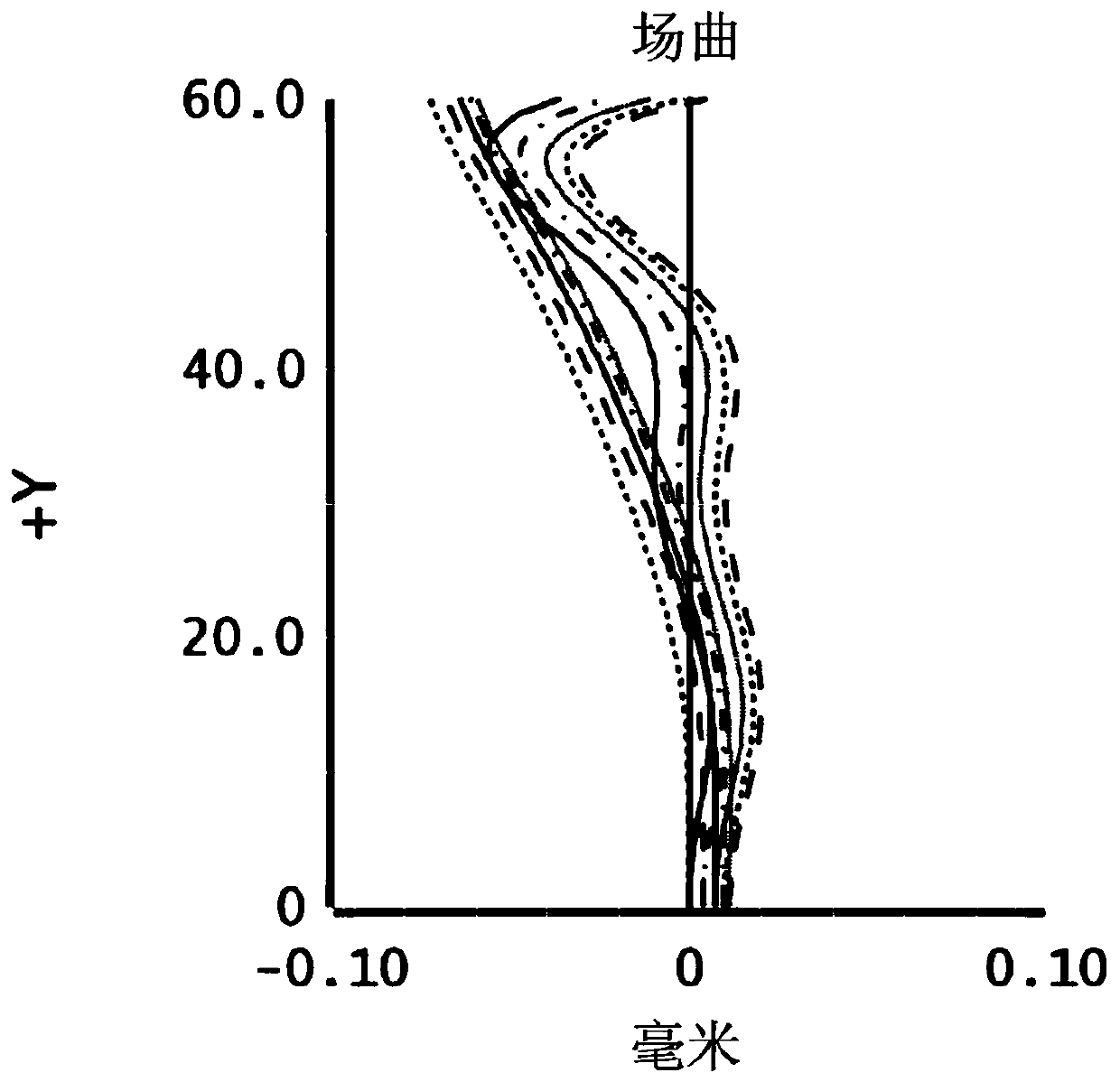Endoscopic lens unit
An endoscope and lens technology, applied in the field of medical lenses, can solve the problems of depth affecting lens observation, inconvenient inspection, small field of view, etc., to improve edge resolution capability, increase range and depth, and reduce lens aperture. Effect
- Summary
- Abstract
- Description
- Claims
- Application Information
AI Technical Summary
Problems solved by technology
Method used
Image
Examples
Embodiment 1
[0081] See figure 1 The endoscope lens 100 provided by the first embodiment of the present invention includes a first lens L1, a second lens L2, a stop ST, and a filter G1 in order from the object plane S10 to the image plane S20.
[0082] The first lens L1 has a positive refractive power, the object side surface S1 is a concave surface, the image side surface S2 is a convex surface, and the first lens L1 is a glass aspheric lens.
[0083] The second lens L2 has a positive refractive power, the object side surface S3 is a concave surface, the image side surface S4 is a convex surface, and the second lens L2 is a glass spherical lens. In other embodiments of the present invention, the second lens L2 may be a plastic aspheric lens.
[0084] The stop ST is arranged in front of the first lens L1 (that is, between the first lens L1 and the object plane S10), and the filter G1 is arranged between the second lens L2 and the image plane S20. The object side of the filter G1 is S5, and the ...
Embodiment 2
[0093] See Figure 5 , The endoscope lens 200 provided by the second embodiment of the present invention. The endoscope lens 200 in this embodiment is substantially the same as the endoscope lens 100 in the first embodiment, except that the second lens L2 of the endoscope lens 200 in this embodiment has a negative focal length. For a high-degree plastic aspheric lens, the object side S3 is convex, and the image side S4 is concave. The curvature radius and material selection of each lens are different. For specific parameters of each lens, see Table 2-1.
[0094] table 2-1
[0095]
[0096]
[0097] The parameters of the aspheric surface of each lens in this embodiment are shown in Table 2-2:
[0098] Table 2-2
[0099]
[0100] In this embodiment, the curvature of field, distortion, and axial chromatic aberration are as follows: Image 6 , Figure 7 with Figure 8 Shown. Since the smaller the data range of the image point, the better the performance of the lens. Figure 6 to Figure ...
Embodiment 3
[0102] See Picture 9 , The endoscope lens 300 provided by the third embodiment of the present invention. The endoscope lens 300 in this embodiment is substantially the same as the endoscope lens 100 in the first embodiment, except that the second lens L2 object side surface S3 of the endoscope lens 300 in this embodiment is convex. , The image side surface S4 is concave, and the radius of curvature and material selection of each lens are different. The specific parameters of each lens are shown in Table 3-1:
[0103] Table 3-1
[0104]
[0105]
[0106] The parameters of the aspheric surface of each lens in this embodiment are shown in Table 3-2:
[0107] Table 3-2
[0108]
[0109] In this embodiment, the curvature of field, distortion, and axial chromatic aberration are as follows: Picture 10 , Picture 11 with Picture 12 Shown. Since the smaller the data range of the image point, the better the performance of the lens. Figure 10 to Figure 12 It can be seen that curvature of f...
PUM
 Login to View More
Login to View More Abstract
Description
Claims
Application Information
 Login to View More
Login to View More - R&D
- Intellectual Property
- Life Sciences
- Materials
- Tech Scout
- Unparalleled Data Quality
- Higher Quality Content
- 60% Fewer Hallucinations
Browse by: Latest US Patents, China's latest patents, Technical Efficacy Thesaurus, Application Domain, Technology Topic, Popular Technical Reports.
© 2025 PatSnap. All rights reserved.Legal|Privacy policy|Modern Slavery Act Transparency Statement|Sitemap|About US| Contact US: help@patsnap.com



